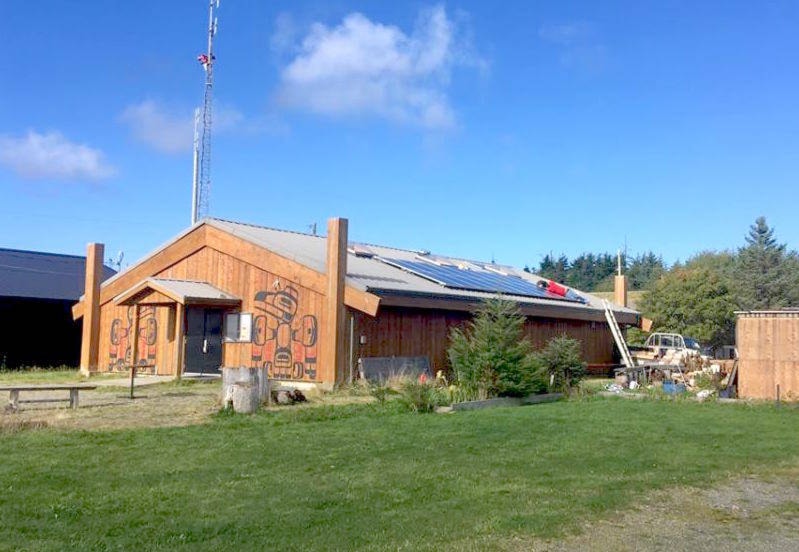On a recent road trip in Belgium, Hanna Edenshaw was struck by how many homes had solar power.
“I thought it was amazing,” said Edenshaw, a Masset high school student who was on exchange in France.
“The other kids were like, ‘It’s normal.’”
At the grand opening for a rooftop solar array on the Old Massett Youth Centre last month, Edenshaw said she hopes Haida Gwaii kids will soon say the same thing.
Thanks to the Swiilawiid Sustainability Society and Gwaii Trust, the youth centres in Old Massett and Skidegate are now partly powered by grid-tied solar systems.
Even on Dec. 19, one of the shortest days of the year, the new 5.5-kilowatt arrays came close to peak output.
“One of the questions a lot of people ask is whether or not solar actually works in Haida Gwaii — it’s a pretty rainy place, we have long dark winters,” said Meredith Adams, whose company, Spark Energy, installed the panels.
But after 10 years of installing solar systems here, Adams said every project has performed better than expected.
One reason is that solar panels work more efficiently in cool temperatures, which suits Haida Gwaii’s temperate climate. Another is that the technology has improved — today’s solar panels make much better use of indirect as well as direct sunlight.
Prices are also falling. Adams said 10 years ago, the $17,000 system on the youth centre would have cost at least twice as much. Demand is growing, too, including on Haida Gwaii, where the Ḵay Centre and six village buildings all got rooftop solar arrays this year.
One cost that has yet to fall is the high price and carbon output of Haida Gwaii’s diesel-fired power stations.
Even before counting flights or freight, most islanders have a far higher carbon footprint than the B.C. average, and the cost of electricity is heavily subsidized.
While a lower carbon footprint is a big motivator for people installing solar here, BC Hydro is also motivated by cost.
“BC Hydro loves it for our area because they pay so much money to keep the power on here,” Adams said.
Saving money isn’t such a strong incentive for people interested in installing solar arrays at home, said Adams. A typical installation still takes 20 or 30 years to pay for itself.
“A lot of people want to put solar on their roof because they think it’s going to save them money now,” she said. “Really, it’s a long-term investment, because you’re interested in lowering your carbon footprint.”
The return on investment could improve if BC Hydro ups its buy-back rate for power fed back into the grid, Adams said. Bulk purchasing can also keep costs down — Skidegate is looking at such a program.
In the last 16 years, Adams has heard a lot of talk about getting Haida Gwaii off diesel for its primary power supply. Small-scale solar is a good way to at least minimize the problem until a solution is found, she said.
“Sooner or later, we’re going to need to use renewable energy to service all of Haida Gwaii.”
